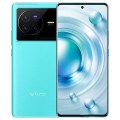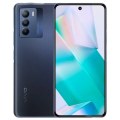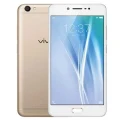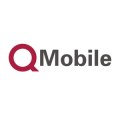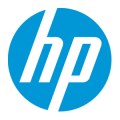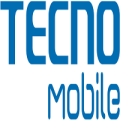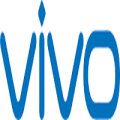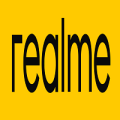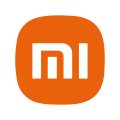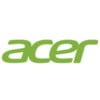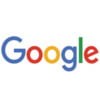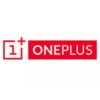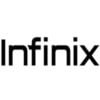Vivo Y12
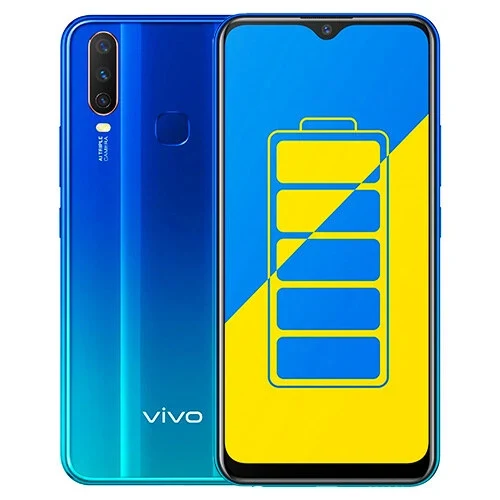

Vivo Y12 Price in Bangladesh
The Vivo Y12 Price in Bangladesh is BDT 14,990 (Official) for its 3GB of RAM and 64GB of internal storage. As it is officially available, you can purchase it from the Bangladeshi official showroom. It comes with a single color which is Aqua Blue. You can purchase this smartphone from Vivo’s unofficial dealer, authorized shop, and online store.
Specifications
General
| Model | Vivo Y12 |
| Announced | 01-06-2019 |
| Released | 01-06-2019 |
| Status | Available |
| Official price | Official (3GB+64GB) ৳14,990 |
| Unofficial price | Unofficial (3GB+64GB) ৳14,200 |
Design
| Dimensions | 159.4 x 76.8 x 8.9 mm (6.28 x 3.02 x 0.35 in) |
| Weight | 190.5 g (6.74 oz) |
| Colors |
Aqua Blue |
Network
| Technology | GSM / HSPA / LTE |
| 2G Network |
GSM 850 / 900 / 1800 / 1900 - SIM 1 & SIM 2 |
| 3G Network |
HSDPA 850 / 900 / 2100 |
| 4G Network |
LTE band 1(2100), 3(1800), 5(850), 8(900), 40(2300), 41(2500) |
| GPRS <strong>GPRS</strong> (General Packet Radio Service) is a packet oriented mobile data service on the 2G and 3G cellular communication system's global system for mobile communications (GSM), Generally, GPRS is used for the purpose of wireless data transfer, such as sharing pictures and videos or browsing the Internet via a mobile phone connection. | |
| EDGE <strong>EDGE</strong> (Enhanced Data GSM Environment) is a wireless network technology generally considered the next step in the 2G network offers data transfer rates up to four times faster than ordinary GSM networks, Generally, EDGE is used for the purpose of wireless data transfer, such as sharing pictures and videos or browsing the Internet via a mobile phone connection. | |
| Speed | HSPA 42.2/5.76 Mbps, LTE-A (2CA) Cat6 300/50 Mbps |
Display
| Display Type <strong>Display Technology => </strong> A number of display technologies and types used in mobile phones => TFT (Thin Film Transistor), IPS (In-Place Switching), OLED (Organic Light Emitting Diode), AMOLED (Active-Matrix Organic Light-Emitting Diode), Super AMOLED (an even advanced version of AMOLED), Resistive Touchscreen (Resistive touchscreens contain two layer of conductive material with a very small gap between them which acts as a resistance), Capacitive Touchsceen (Capacitive touchscreen technology consists of a layer of glass coated with a transparent conductor) | IPS LCD capacitive touchscreen, 16M colors |
| Size | 6.35 inches, 99.6 cm2 (~81.4% screen-to-body ratio) |
| Resolution | 720 x 1544 pixels (~268 ppi density) |
Camera
Main camera
| Primary <strong>Camera</strong> is able to capture photographs and usually videos, The most important characteristics of a camera are the resolution (measured in megapixels), lens focus type (fixed or automatic), higher megapixel cameras are known to capture higher quality photos, but not always a good measurement of the photos quality. |
13 MP, f/2.2, PDAF 8 MP, f/2.2, 16mm (ultrawide) 2 MP, f/2.4, depth sensor |
| Features | LED flash, HDR, panorama |
| Video | 1080p@30fps |
Selfie camera
Hardware
| Chipset <strong>Chipset</strong> is a group of integrated circuits designed to perform one or a more dedicated functions, often with real time computing constraints, Popular smartphones are equipped with more advanced embedded chipsets that can do many different tasks depending on their programming. | Mediatek MT6762 Helio P22 (12 nm) |
| CPU <strong>CPU</strong> (Central Processing Unit) mostly known as processors, CPU processes instructions in order to carry out certain functions that make your device operate properly. Processors are often described as the brain of computers, smartphones and tablets, Smartphones and tablets rely on processors to carry out their every task, Processors are an incredibly important factor in selecting any type of computing device, including your smartphone. | Octa-core 2.0 GHz Cortex-A53 |
| GPU <strong>GPU</strong> (Graphics Processing Unit) is a single-chip processor designed to rapidly manipulate and alter memory to accelerate the creation of images in a frame buffer intended for output to a display, This includes things such as lighting effects, object transformations, and 3D motion. | PowerVR GE8320 |
| RAM (Memory) <strong>RAM</strong> (Random Access Memory) is a type of computer memory that can be accessed randomly, any byte of memory can be accessed without touching the preceding bytes that allows information to be stored and accessed quickly from random locations. RAM is the most common type of memory found in computer systems, smartphones, tablets and other electronic devices. | 4/3 GB |
| Internal Storage <strong>Internal Storage</strong> is a data storage space (flash memory) mostly used in smartphones, tablets and other electronic devices where operating system, apps, music, photos, videos, files and other user data Is stored. | 64/32 GB |
| Sensors <strong>Sensors</strong> are electronic components that detects and responds to some type of input from the physical environment. The specific input could be light, heat, motion, moisture, pressure and location, The output is generally a signal that is converted to use in computing systems, a location sensor, such as a GPS receiver is able to detect current location of your electronic device. |
Fingerprint (rear-mounted), accelerometer, proximity, compass |
Connectivity
| Bluetooth <strong>Bluetooth</strong> is a wireless communications technology for exchanging data between mobile phones, headsets, computers and other network devices over short distances without wires, Bluetooth technology was primarily designed to support simple wireless networking of personal consumer devices. | 5.0, A2DP, LE |
| Infrared <strong>Infrared</strong> connectivity is an old wireless technology used to connect two electronic devices. It uses a beam of infrared light to transmit information and so requires direct line of sight and operates only at close range. | |
| USB | microUSB 2.0, USB On-The-Go |
| GPS <strong>GPS</strong> The Global Positioning System is a satellite-based radio navigation system, GPS permits users to determine their position, velocity and the time 24 hours a day, in all weather, anywhere in the world, In order to locate your position, your device or GPS receiver must have a clear view of the sky. | Yes, with A-GPS, GLONASS, GALILEO, BDS |
| NFC <strong>NFC</strong> (Near field communication) is a set of standards for smartphones and similar devices to establish peer-to-peer radio communications with each other by touching them together or bringing them into proximity, usually no more than a few inches. |
Battery
| Battery Type <strong>Battery Type => </strong> Cell phones run on various kinds of batteries depending on the manufacturer, phone size or shape and features. There are basically four types of cell phone batteries => Lithium Polymer, Lithium Ion, Nickel Metal Hydride and Nickel Cadmium. | Non-Removable Li-Po |
| Capacity <strong>Battery Capacity</strong> is a measure (typically in Amp-hr) of the charge stored by the battery, and is determined by the mass of active material contained in the battery. The battery capacity represents the maximum amount of energy that can be extracted from the battery under certain conditions. | 5000 mAh battery |
The Vivo Y12: A Comprehensive Review for Savvy Smartphone Shoppers
In the competitive world of budget smartphones, finding the perfect balance between cost and functionality can be challenging. For tech enthusiasts, discerning buyers, and budget shoppers alike, the Vivo Y12 has emerged as a noteworthy contender. But does it really deliver the goods? In this comprehensive review, we’ll dive into the key aspects of the Vivo Y12, from its design and performance to its camera quality and battery life. By the end, you’ll have all the information you need to determine whether this smartphone is the right fit for you.
Overview of Vivo Y12
The Vivo Y12 is a budget-friendly smartphone that aims to offer a well-rounded experience without breaking the bank. Launched as part of Vivo’s Y-series, this device targets users who desire essential features wrapped in a sleek design. The Vivo Y12 boasts a triple-camera setup, a robust battery, and a user-friendly interface, making it enticing for those looking for value for money.
At its core, the Vivo Y12 is powered by a MediaTek Helio P22 processor, ensuring smooth day-to-day performance. It comes equipped with a sizable 5,000mAh battery, designed to keep the device running throughout the day. Available in attractive colors and featuring a vibrant display, the Vivo Y12 is built to appeal to a wide range of smartphone users.
This review will delve into each of these features and more, providing a detailed examination of what the Vivo Y12 brings to the table.
Design and Build Quality
The first thing you notice about any smartphone is its design, and the Vivo Y12 doesn’t disappoint in this regard. With its sleek form factor and modern aesthetics, this device catches the eye immediately. The back panel is made of glossy plastic, giving it a premium look without the premium price tag. Available in colors like Aqua Blue and Burgundy Red, the Vivo Y12 offers a touch of elegance that sets it apart from other budget phones.
Ergonomically, the Vivo Y12 feels good in hand. It weighs around 190 grams and has a slim profile, making it easy to hold and operate with one hand. The buttons are well-placed and provide a satisfying tactile response. Despite its plastic build, the device feels sturdy and well-constructed, indicating that Vivo hasn’t cut corners when it comes to durability.
Additionally, the Vivo Y12 includes a rear-mounted fingerprint sensor, adding a layer of security and convenience. This sensor is quick and reliable, ensuring that you can unlock your phone swiftly and securely. Overall, the design and build quality of the Vivo Y12 are commendable, especially given its budget pricing.
Display and Performance
When it comes to the display, the Vivo Y12 offers a 6.35-inch IPS LCD screen with a resolution of 720 x 1544 pixels. While it may not feature Full HD resolution, the display is sufficiently vibrant and sharp for everyday use. Colors appear vivid, and the viewing angles are decent, making it a good option for watching videos and browsing social media.
Under the hood, the Vivo Y12 is powered by the MediaTek Helio P22 processor, coupled with 3GB or 4GB of RAM depending on the variant. This combination ensures smooth performance for most tasks, including web browsing, social media, and casual gaming. However, for more demanding applications or heavy multitasking, you may notice some lag or slowdowns.
The device runs on FunTouch OS 9, based on Android 9.0 Pie. This custom skin offers a range of features and optimizations that enhance the overall user experience. While it might take some time to get used to if you’re coming from a stock Android device, FunTouch OS provides a smooth and responsive interface with minimal bloatware.
Camera Quality
One of the standout features of the Vivo Y12 is its triple-camera setup, which is impressive for a phone in this price range. The primary camera is a 13MP sensor, accompanied by an 8MP ultra-wide lens and a 2MP depth sensor. This versatile setup allows you to capture a variety of shots, from expansive landscapes to detailed portraits.
In good lighting conditions, the camera performs admirably. Images are sharp, with accurate colors and good dynamic range. The ultra-wide lens is particularly useful for capturing group photos or scenic views, adding an extra layer of versatility to your photography.
However, the camera does struggle in low-light conditions. Images tend to be grainy, and the lack of optical image stabilization becomes apparent. While there is a dedicated night mode, it doesn’t perform as well as those found on higher-end devices. Nonetheless, for its price, the Vivo Y12’s camera setup is more than capable of capturing memorable moments.
Battery Life
Battery life is a crucial factor for any smartphone, and the Vivo Y12 excels in this department. Equipped with a massive 5,000mAh battery, this device is built to last. For most users, the Vivo Y12 can easily get through a full day of heavy usage, including web browsing, video streaming, and social media.
In terms of charging, the Vivo Y12 supports standard 10W charging. While it may not offer the fast charging speeds found in more expensive models, the substantial battery capacity means you won’t need to charge it as frequently. On average, you can expect the device to go from 0% to 100% in about two hours.
For those who prioritize battery life and don’t want to be tethered to a charger all day, the Vivo Y12 is an excellent choice. Its endurance makes it particularly attractive for travelers, students, and professionals who are always on the go.
Software and User Interface
The software experience on the Vivo Y12 is driven by FunTouch OS 9, Vivo’s custom skin based on Android 9.0 Pie. While some users may prefer a stock Android experience, FunTouch OS offers a range of customizations and features that enhance usability.
One of the standout features is the Smart Split, which allows you to run two apps side-by-side, making multitasking a breeze. Additionally, the Jovi AI assistant provides helpful suggestions and optimizations based on your usage patterns. The interface is intuitive and easy to navigate, with a range of gestures and shortcuts to streamline your interactions.
However, one area where FunTouch OS could improve is bloatware. The Vivo Y12 comes pre-installed with several third-party apps that may not be useful to all users. While these can be uninstalled, it’s an extra step that some may find inconvenient. Overall, the software experience is smooth and user-friendly, offering a range of features that enhance the overall functionality of the device.
Storage and Connectivity
The Vivo Y12 offers ample storage options to accommodate your needs. The device comes with either 32GB or 64GB of internal storage, which can be expanded up to 256GB via a microSD card. This ensures that you have plenty of space for your apps, photos, videos, and other files.
In terms of connectivity, the Vivo Y12 covers all the basics. It supports dual SIM functionality, allowing you to use two numbers simultaneously. The device also includes 4G LTE, Wi-Fi, Bluetooth 5.0, and GPS, ensuring that you stay connected wherever you go. Additionally, the Vivo Y12 features a micro-USB port for charging and data transfer, as well as a 3.5mm headphone jack for audio.
While some users might prefer a USB Type-C port, the micro-USB still gets the job done. Overall, the storage and connectivity options on the Vivo Y12 are more than sufficient for the average user, providing the flexibility and convenience needed for everyday tasks.
Price and Value for Money
One of the most compelling aspects of the Vivo Y12 is its affordability. Priced competitively, this device offers a range of features that are typically found in more expensive smartphones. For budget-conscious buyers, the Vivo Y12 provides excellent value for money, delivering a well-rounded experience without compromising on essential features.
When compared to other phones in its price range, the Vivo Y12 stands out for its robust battery life, versatile camera setup, and attractive design. While it may not have the high-end specifications of flagship models, it offers a balanced mix of performance and functionality that will satisfy most users.
For those looking for a reliable and feature-rich smartphone without breaking the bank, the Vivo Y12 is a strong contender. Its combination of affordability and functionality makes it an excellent choice for budget shoppers and tech enthusiasts alike.
Pros and Cons
As with any device, the Vivo Y12 has its strengths and weaknesses. Here’s a quick rundown of the pros and cons to help you make an informed decision.
Pros
- Robust Battery Life: The 5,000mAh battery ensures long-lasting usage, making it ideal for heavy users.
- Versatile Camera Setup: The triple-camera system offers a range of shooting options, from wide-angle shots to detailed portraits.
- Attractive Design: The sleek design and glossy finish give the Vivo Y12 a premium look and feel.
Cons
- Average Low-Light Camera Performance: While the camera performs well in good lighting, it struggles in low-light conditions.
- Lack of Fast Charging: The standard 10W charging is slower compared to the fast charging options available in other devices.
- Pre-Installed Bloatware: The device comes with several third-party apps that may not be useful to all users.
Final Thoughts
In conclusion, the Vivo Y12 is a well-rounded budget smartphone that offers a range of features typically found in more expensive models. With its robust battery life, versatile camera setup, and attractive design, it provides excellent value for money. While it has its limitations, such as average low-light camera performance and lack of fast charging, these are minor drawbacks in an otherwise impressive package.
For tech enthusiasts, smartphone buyers, and budget shoppers, the Vivo Y12 is a strong contender worth considering. It delivers a balanced mix of performance, functionality, and affordability, making it an excellent choice for those looking to get the most bang for their buck.
If you’re in the market for a new smartphone that won’t break the bank but still offers a range of features and reliable performance, the Vivo Y12 might just be the perfect fit for you.
